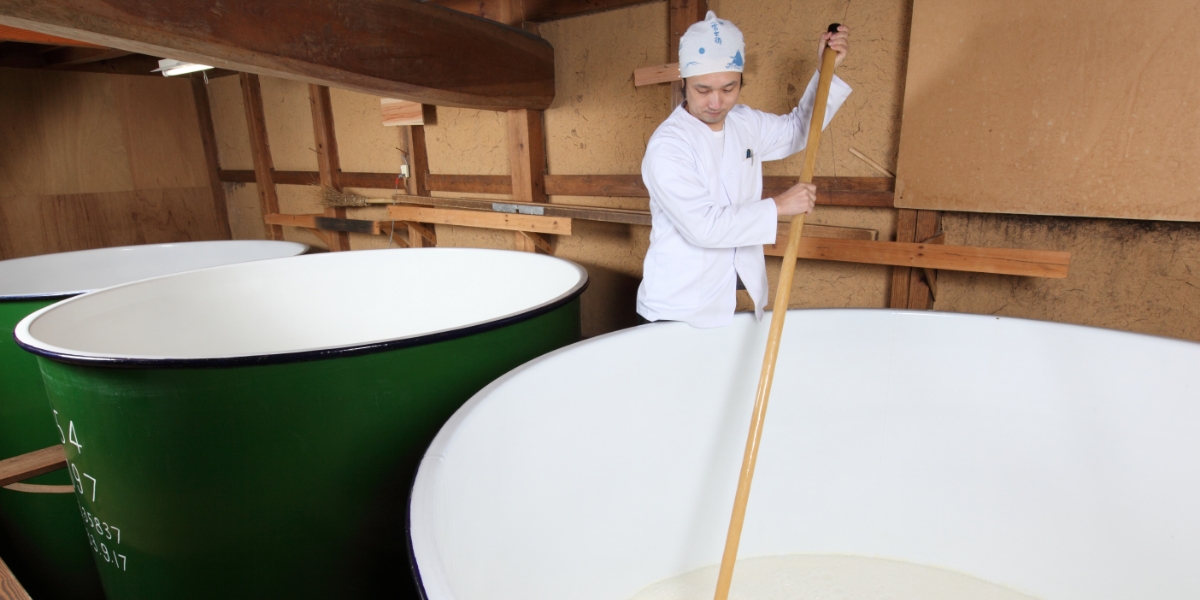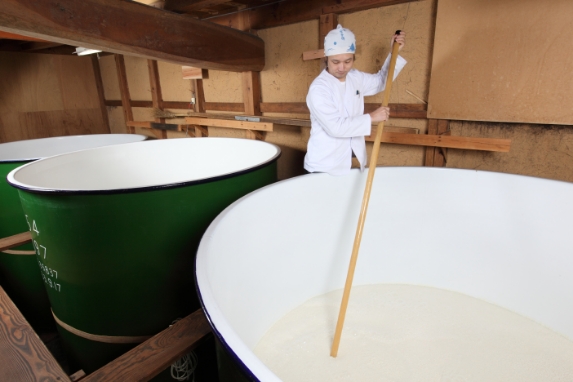飯尾醸造の酢造り

3.清酒の仕込み
毎年冬になると、自社の酒蔵で杜氏が酒を仕込みます。精米から始まり、麹づくり、酒母づくりなど、そのほとんどが手作業。昔ながらの酢の製法を守る私どもでは、日本酒とほぼ同じ工程で酒を造っていきます。

精米から蒸し米
酒づくりはまず精米から始まります。精米を終えた米は、洗ってから一晩水に浸され、大きな蒸し釜で約60分蒸されます。精米歩合は平均して83%程度。一般の日本酒よりも低いのは、美味しい酢づくりのために、タンパク質を多く残す必要があるからです。
近頃は多くの日本酒メーカーでも、精米は他にまかせるところが多いようですが、私どもでは品質第一に、目の届くところで造りたいという考えから、精米も自社蔵で品種ごとに丁寧に行っています。自社で一貫して行うことによって、精米機の中でよその米が混ざることを避けられるからです。

自社蔵の精米機で精米します
米麹づくり
蒸し上がった米を40℃まで冷まし、米粒に麹菌をまんべんなくまぶしてから、麹菌を繁殖させるため麹室へ移します。 麹室はむっとするような蒸し暑い空間。室温29℃、湿度70%に保たれています。固まった米粒に何度も手を入れてほぐしてやりながら、丸2日かけて糖化力とタンパク分解力の強い麹を作ります。できあがった麹は、麻布の上に広げて常温まで冷まします。良い麹を作ることは良い酒造りの要、つまり美味しい酢造りにおいても重要なポイントとなります。

蒸しあがった米を広げて麹菌をまぶします
酒づくり
酒母ができると大きなタンクに移し替え、酒の仕込みが始まります。水、麹、蒸し米の順にタンクに投入しますが、一度に大量に入れると発酵力が弱まるため、3回に分けて行います(三段仕込み)。最初の投入から2日後にはパシャパシャと音を立てて発酵が始まり、約30日かけて酒ができあがります。できあがった酒は、アミノ酸が多く味は濃醇甘口。この雑味と旨味が、のちに美味しいお酢へと変わるのです。

櫂入れの様子